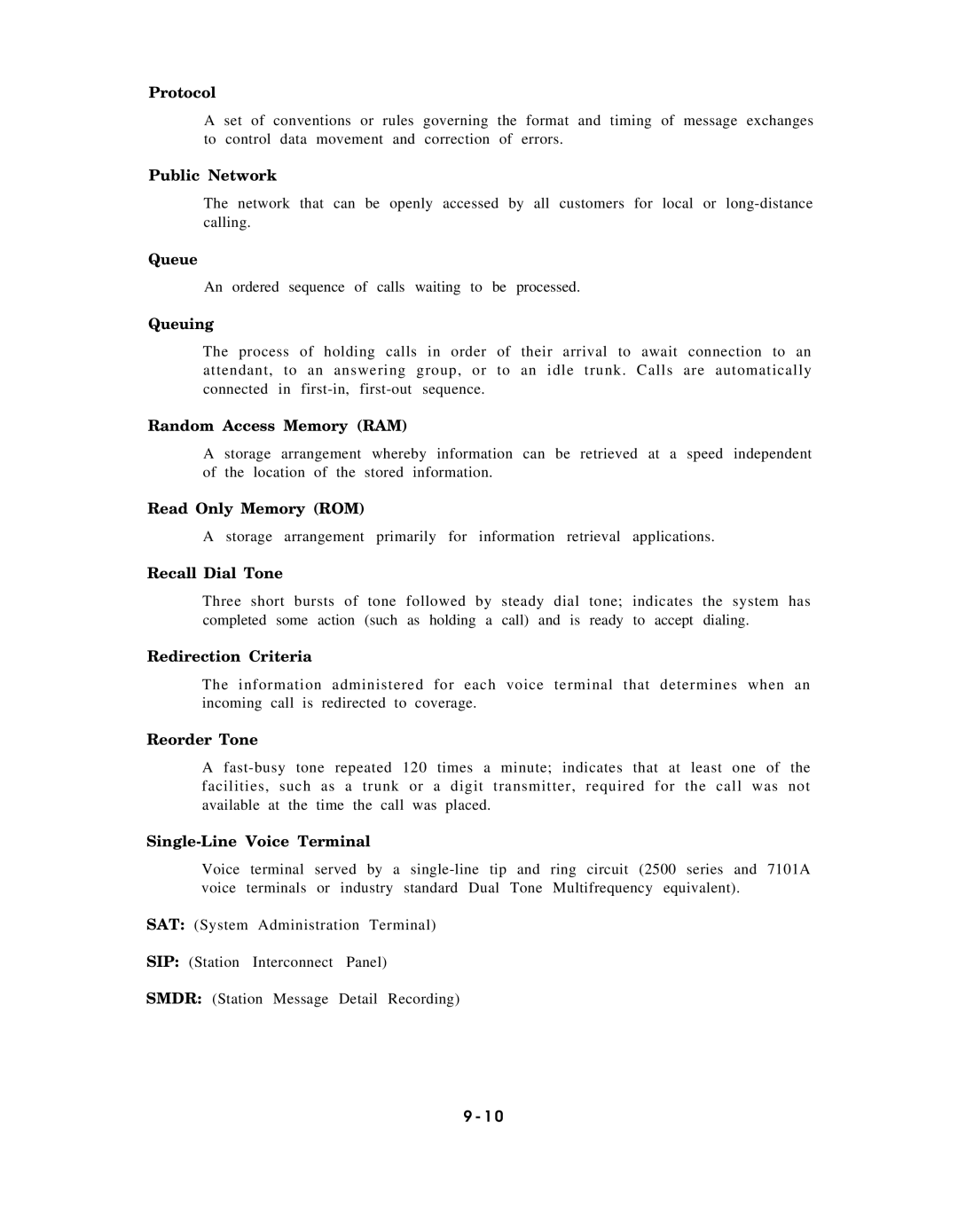Protocol |
|
A | set of conventions or rules governing the format and timing of message exchanges |
to | control data movement and correction of errors. |
Public Network
The network that can be openly accessed by all customers for local or
Queue
An ordered sequence of calls waiting to be processed.
Queuing
The process of holding calls in order of their arrival to await connection to an attendant, to an answering group, or to an idle trunk. Calls are automatically connected in
Random Access Memory (RAM) |
|
| |
A storage arrangement | whereby | information can | be retrieved at a speed independent |
of the location of the stored information. |
| ||
Read Only Memory (ROM) |
|
|
|
A storage arrangement | primarily | for information | retrieval applications. |
Recall Dial Tone
Three short bursts of tone followed by steady dial tone; indicates the system has completed some action (such as holding a call) and is ready to accept dialing.
Redirection Criteria
The information administered for each voice terminal that determines when an incoming call is redirected to coverage.
Reorder Tone
A
Single-Line Voice Terminal
Voice terminal served by a
SAT: (System Administration Terminal)
SIP: (Station Interconnect Panel)
SMDR: (Station Message Detail Recording)
9 - 1 0
